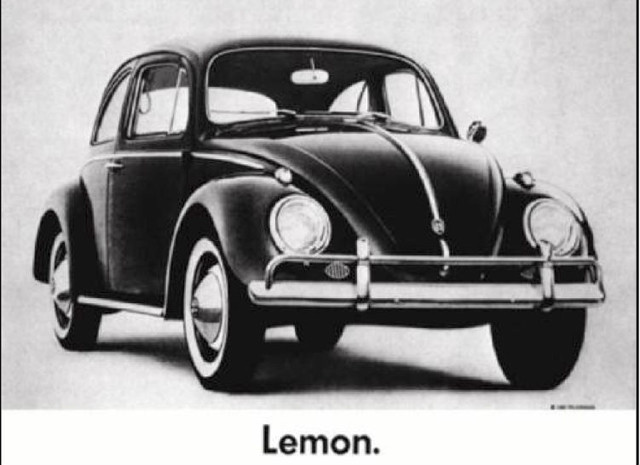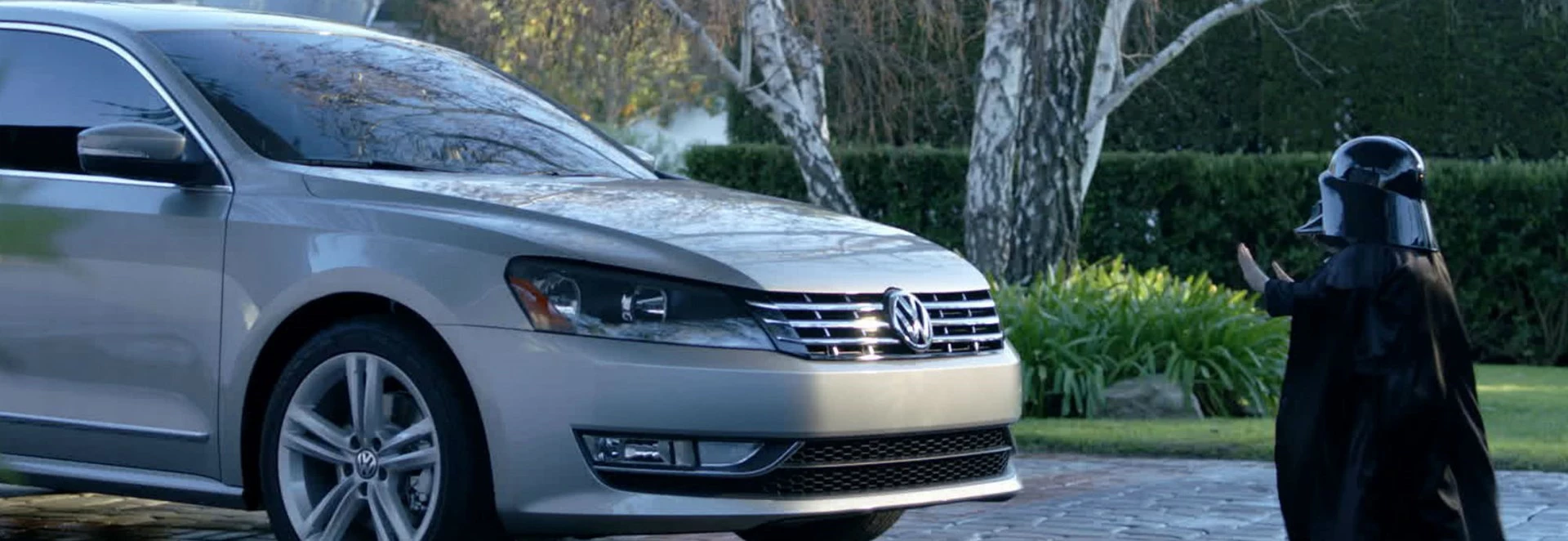Perhaps more than any other product on earth, car advertisements can be used to track the rises and falls of the economic, political and social history of the twentieth century.
For most people, aside from a house, a car is the biggest purchase they’ll ever make, and such a huge decision requires huge amounts of money and creative firepower on behalf of manufacturers who want to stand out from the crowd.
It’s also 60 years since ITV, the first commercial television channel, began broadcasting in the UK, and its launch coincided with a new era of automotive adverts beamed directly, for the first time, into the homes of buyers.
Over the years, as trends and tastes have changed, so have the ads. Some things always stay the same, however, and creative genius is something which can always be appreciated. As a result, here’s our list of just some of the greatest campaigns of the past 60 years.

The early days
The first car ads date, unsurprisingly, from the same era that the first automobiles were released. After all, how else were manufacturers supposed to convince a resistant public that this blasphemously horseless carriage wouldn’t kill them?
Early car advertisements tended to focus on the vehicle’s capability to be non-deadly to its driver, with features like its ability to drive long distances without incident.
That’s not to say that they were devoid of humour, though. In 1931, General Motors commissioned animation pioneers Fleischer Studios, the masterminds behind Popeye the Sailor, Betty Boop and the early Superman cartoons, to create an advert for the Oldsmobile.
The result? A surprisingly licentious cartoon where the hero saves his love interest from a moustachioed villain before taking her for a ride in his brand-new automobile, which proved a hit with audiences at the time, despite there being no televisions to watch it on.
1950s
In the post-war years of the 1950s, the end of rationing gave carmakers free reign to build larger and more expensive vehicles, with advertisers selling the aspirational dream of the good life.
Particularly in the US, cars began to get impossibly large, and the adverts reflected the West’s newfound lust for luxury, with spots for Plymouths and Pontiacs in front of modern homes, swimming pools and foreign beaches.
This all changed in 1959 when Volkswagen, under the direction of art director Helmut Krone, launched its famously minimal ‘Lemon’ and ‘Think Small’ campaigns for the Beetle, bucking the trend by undermining the status quo of consumptive delusion.
Compared with the majority of cars at the time, the Beetle was small, oddly shaped and minimalist, with the adverts showing off its small size, countercultural attitude and reinforcing brand identity rather than showing reams of multitudinous features.
Now regarded as one of the greatest advertising campaigns of all time, it was named the ad of the 20th century and, according to the Portland Business Journal, “changed the very nature of advertising”. Not bad for a little German bug.
1960s
While cars were advertised quite frequently on television in the late 1950s, along with motor oils and accessories, caravans and motorised scooters, automotive advertising sharply declined in the second half of 1961.
The scope for TV adverts on UK television at the time was limited anyway, as ITV was the only commercial channel available at the time, but from October 1961 only a tiny amount of car ads were broadcast in the country.
In actual fact, this was due to a secret gentleman’s agreement between the largest manufacturers, Ford, Vauxhall, Chrysler and British Leyland, who created a pact to not release ads.
Japanese manufacturer Datsun was the company responsible for sneakily breaking the cartel agreement in 1969, which forced carmakers to once again start broadcasting advertisements.
There were some real gems from the era, however, including Triumph’s much-loved TV spot for the Herald, which exploited its manoeuvrability and small turning circle for great comedic effect.
1970s
By the beginning of the 1970s, TV viewing had established itself as a core experience for families, with TV having overtaken print and radio as the preferred medium for advertising agencies.
During the decade, foreign car adverts started to creep onto television sets more often than they had before, with an influx of TV spots from Japanese brands in particular, which were starting to make headway into the British market.
During the 70s, marketers leaned towards a trend of looking for accountability and efficiency in their campaigns, with scientific data, techniques and celebrity endorsers used to convince audiences to trust in the companies’ brand.
One of the more notable celebrity-endorsed advertising campaigns from a British manufacturer came from Vauxhall, which enlisted none other than Formula One champion James Hunt.
Hunt’s connection with Vauxhall came through his first F1 team, Hesketh Racing, with Vauxhall supplying all of the team’s support vehicles. After moving to McLaren in 1976 and winning the World Drivers' Championship, when the time came for Vauxhall’s people to advertise the new Viva HC, they knew who to call.
1980s
The 1980s marked another turning point for car advertisement history, particularly due to the launch of Channel 4 in November 1982. Manufacturers wasted no time in seizing the opportunity to advertise on another channel, and in fact the very first advert to air on Channel 4 was for Vauxhall.
Mazda was also the first company in the world to explore interactive TV advertising in the latter half of the decade. TV viewers were instructed to record Mazda’s ad on their tape recorders and play it back frame-by-frame in order to enter a competition to win a car.
Still, not every advert during this period was a good one, and plenty of the TV spots for cars in the 1980s fell into the category of being decidedly perfunctory.
Perhaps the best of the worst was Ford’s hilariously gloomy 1988 advert for the Orion, with the underlying message behind this Thatcher-era fantasy commercial for the Escort-with-a-boot apparently being “it’s not as bad as you think it is”. Which it was.
1990s
Throughout the 1990s, the sheer volume of advertisements was staggering, with nearly every avenue for ad campaigns flourishing, with the sole exception of billboards.
Accounting for more than 60 per cent of magazine revenue, the amount of adverts during the decade actually sparked concern as to whether it could have a damaging effect on populations.
Yet, despite the saturation, there was still room for one or two particularly good advertising campaigns to stand head and shoulders above the rest, and few entered pop culture in the way that Renault’s ‘Papa & Nicole’ campaign for the Clio did.
Taking place over eight years, Renault released a new short advert each year which documented the charming story of a young French girl, Nicole, and her father. Each ad had its own self-contained story, but also worked together as a sequence to follow Nicole’s growth into a sophisticated young woman.
Intended to mirror the Clio’s development and refinement over the years, the series proved hugely popular with viewers and, according to Renault itself, almost single-handedly restored the UK’s faith in a brand which had been in steep decline at the start of the decade.
2000s
The Noughties proved to be the decade when car advertising finally became democratised. Gone were the concepts of nuclear families, patronising ‘independent woman’ pitches or jingoistic notions, replaced with ads that were more about emotional connection.
No longer just a pure sales pitch designed to push a product directly, car adverts on TV during the 2000s became events within themselves, with manufacturers all clamouring to outdo each other with the coolest and most watchable ad.
Probably the most instantly memorable, however, was Citroen’s Transformer advert, which saw the C4 turn into a robot before strutting its stuff in a car park to Les Rythmes Digitales.
Created thanks to Marty Kudelka, the choreographer who worked with Justin Timberlake, the latest in animation techniques and a laser-scanned computer model of the C4, it’s one of the best-loved and recognisable ads ever made.
2010s
Just as television took over from radio as the main advertising medium decades previously, the rise of the internet and viral marketing has offered a lucrative new avenue for advertisers to exploit.
Viral ads from manufacturers like Mercedes, Volkswagen and Audi have set a precedent for other car companies to follow, with nearly every new car now coming with some sort of snazzy, shareable video to accompany it.
Last year, video analytics firm Visible Measures conducted research to find the most popular viral car advertisement, considering not just original plays but how many times the videos had been copied and uploaded by others.
Honda, long known for its clever approach to promotion, took the top spot on the list with its ‘Hands’ advertisement, which pays tribute to the company’s innovations in the fields of automotive technology over the past 65 years.
Of course, these are only the beginning of the story. Have you got any other favourites you can list? Why not join the discussion on our Facebook and Twitter channels!




